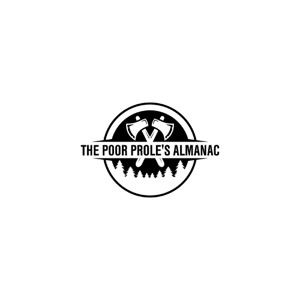From Lawn to Livestock: Transforming Your Landscape into a Thriving Pasture Ecosystem
The Poor Prole’s Almanac - A podcast by The Poor Prole’s Alamanac, Bleav

Categories:
This episode of "The Poor Proles Almanac" focuses on designing resilient and sustainable pasture systems, specifically addressing erosion control and paddock layout. Erosion Control and Pasture Design Pasture design should minimize animal movement up and down hills to prevent erosion. Animals frequently traveling up and down hills create paths that can become channels for water runoff, leading to the formation of ditches and soil loss. Alleyways or lanes are important for controlling animal movement and minimizing erosion. These designated paths, potentially reinforced with gravel or fabric, help direct animals between paddocks or to and from barns, reducing uncontrolled trampling and soil compaction. Sacrifice lots, areas for confining animals during wet weather, should be strategically located to prevent nutrient runoff. Placing them away from water sources like streams, ponds, or wells is crucial to protect water quality and prevent contamination. Using gravel and stone dust can help stabilize sacrifice areas, improve drainage, and protect animal hooves. This is particularly beneficial in areas with heavy clay soils or high rainfall. Paddock Design and Layout Temporary fencing is recommended initially to allow flexibility in paddock size and layout. This allows for adjustments based on observations of animal behavior, grazing patterns, and pasture growth over several years before installing permanent fencing. Paddock shape should aim for squares to minimize fencing material, but practicality often dictates irregular shapes. Factors like property boundaries, existing features like trees or sheds, and the need for access routes all influence paddock design. Easy access to water is crucial for animal welfare and efficient grazing. Providing water sources within 800 feet of any point in the paddock encourages animals to graze uniformly and prevents overgrazing in areas closer to water. Permanent water systems that minimize external inputs are ideal. Utilizing natural water sources like streams or constructing small ponds within paddocks reduces reliance on labor-intensive methods like hauling water or installing complex plumbing. Gates should be strategically placed to facilitate animal movement and minimize stress. Placing gates in corners where animals naturally want to move and ensuring they are wide enough for equipment access simplifies daily chores and emergency handling. A designated livestock handling system should be located for convenience and accessibility. Factors to consider include proximity to barns, good drainage, access for vehicles, and potential for electricity for lighting or tools. Paddock Sizing and Management Paddock size depends on several factors, including the number of animals, forage availability, growth rates, and topography. It's recommended to start with enough forage to feed animals for four to five days in each paddock, but this can be adjusted based on observations and experience. Understanding the growth patterns of cool-season (C3) and warm-season (C4) grasses is essential for effective paddock rotation. Matching grazing periods to peak growth phases for different grass types maximizes forage utilization and promotes healthy pasture growth. Topography plays a significant role in paddock size and management. Soil fertility and productivity vary across a landscape, often with more fertile areas in lower elevations. Larger paddocks may be needed in less productive areas to provide sufficient forage. Temporary fencing allows for adjustments to paddock size based on forage availability and seasonal changes. This flexibility is crucial for preventing overgrazing and ensuring adequate rest periods for pasture recovery. Integrating Grazing Systems with Other Practices Harvesting excess forage as hay during peak growth periods helps prevent plants from maturing and declining in feed value. This also allows for stockpiling winter feed or supplementing during droughts. The episode hints at future discussions on incorporating tree crops and other elements into grazing systems to further enhance resilience and productivity. This suggests a holistic approach that integrates various aspects of sustainable land management. The episode emphasizes that creating successful grazing systems is an ongoing process of observation, adaptation, and learning. It encourages listeners to embrace the complexity of these systems and develop an intuitive understanding of the interplay between land, animals, and management practices. For sources, transcripts, and to read more about this subject, visit: www.agroecologies.org To support this podcast, join our patreon for early, commercial-free episode access at https://www.patreon.com/poorprolesalmanac For PPA Writing Content, visit: www.agroecologies.org For PPA Restoration Content, visit: www.restorationagroecology.com For PPA Merch, visit: www.poorproles.com For PPA Native Plants, visit: www.nativenurseries.org To hear Tomorrow, Today, our sister podcast, visit: www.tomorrowtodaypodcast.org/
